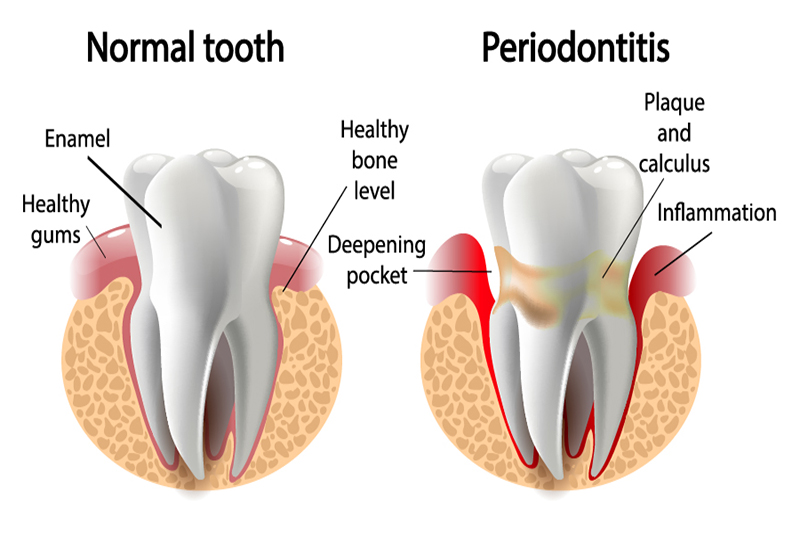What is Periodontal Disease?
The word periodontal means "around the tooth". Periodontal disease attacks the gums and the bone structures that support the teeth. The most common periodontal disease, gingivitis, is caused by an extreme accumulation of plaque on your teeth. Plaque is a sticky film of food debris and bacteria. If not removed, plaque mixes with the saliva in your mouth and forms calculus (a.k.a. tartar).
This excessive build-up of tartar eventually leads to the gum disease gingivitis which, when left untreated, can develop into periodontal disease and (eventually) periodontitis. The symptoms of periodontal disease are characterized by red, swollen and bleeding gums; however, since these warning signs can be very subtle, and the early stages of the disease usually painless, a shocking FOUR out of FIVE people who have periodontal disease don't even know it!
What Are the Risks Associated with Periodontal Disease?
One of the most problematic aspects of periodontal disease is, as discussed above, it oftentimes goes unnoticed for quite a while. Like most diseases, without proper and timely professional treatment the condition will inevitably continue to progress; gingivitis develops into periodontal disease and periodontal disease, in turn, develops into periodontitis. Periodontitis is a serious (and potentially fatal!) infection of the gums and surrounding soft tissues that support your teeth. This degeneration of the structural integrity of your mouth's supportive structures can lead to tooth and bone loss. In fact, periodontal disease is the leading cause for tooth loss amongst American adults!
The perils of periodontal disease extend far beyond the aforementioned issues of tooth and/or bone loss. There is a mounting body of scientific evidence suggesting that there is a strong correlation between periodontal disease and a plethora of other life-threatening conditions. The inflammation of the gums that results from severe periodontal disease leads to hardened arteries (a.k.a. atherosclerosis), making it far more difficult for blood to flow naturally through the body and putting you at a much greater risk for a heart attack and/or stroke.









